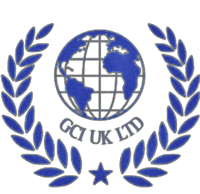ISO 20000
(Information technology Service management)
ISO/IEC 20000 is the international standard for IT service management. It was developed in 2005 by ISO/IEC JTC1/SC7 and revised in 2011 and 2018. It was originally based on the earlier BS 15000 that was developed by BSI Group. ISO/IEC 20000, like its BS 15000 predecessor, was originally developed to reflect best practice guidance contained within the ITIL framework,[citation needed] although it equally supports other IT service management frameworks and approaches including Microsoft Operations Framework and components of ISACA's COBIT framework. The differentiation between ISO/IEC 20000 and BS 15000 has been addressed by Jenny Dugmore.The standard was first published in December 2005. In June 2011, the ISO/IEC 20000-1:2005 was updated to ISO/IEC 20000-1:2011. In February 2012, ISO/IEC 20000-2:2005 was updated to ISO/IEC 20000-2:2012.ISO 20000-1 has been revised by ISO/IEC JTC 1/SC 40 IT Service Management and IT Governance. The revision was released in July 2018. From that point certified entities enter a three year transition period to update to the new version of ISO 20000-1
Why ISO 20000?
It enables IT departments to ensure that their ITSM processes are aligned with the business's needs and international best practices. The ISO 20000 standard helps organisations benchmark how they deliver managed services, measure service levels, and assess their performance.
...
This document specifies requirements for an organization to establish, implement, maintain and continually improve a service management system (SMS). The requirements specified in this document include the planning, design, transition, delivery and improvement of services to meet the service requirements and deliver value. This document can be used by:
a) a customer seeking services and requiring assurance regarding the quality of those services;
b) a customer requiring a consistent approach to the service lifecycle by all its service providers, including those in a supply chain;
c) an organization to demonstrate its capability for the planning, design, transition, delivery and improvement of services;
d) an organization to monitor, measure and review its SMS and the services;
e) an organization to improve the planning, design, transition, delivery and improvement of services through effective implementation and operation of an SMS;
f) an organization or other party performing conformity assessments against the requirements specified in this document;
g) a provider of training or advice in service management.
The term "service" as used in this document refers to the service or services in the scope of the SMS. The term "organization" as used in this document refers to the organization in the scope of the SMS that manages and delivers services to customers. The organization in the scope of the SMS can be part of a larger organization, for example, a department of a large corporation. An organization or part of an organization that manages and delivers a service or services to internal or external customers can also be known as a service provider. Any use of the terms "service" or "organization" with a different intent is distinguished clearly in this document.
OUR ADDRESS
England and Wales 28 BRUSHFIELD STREET LONDON ENGLAND E1 6AN
